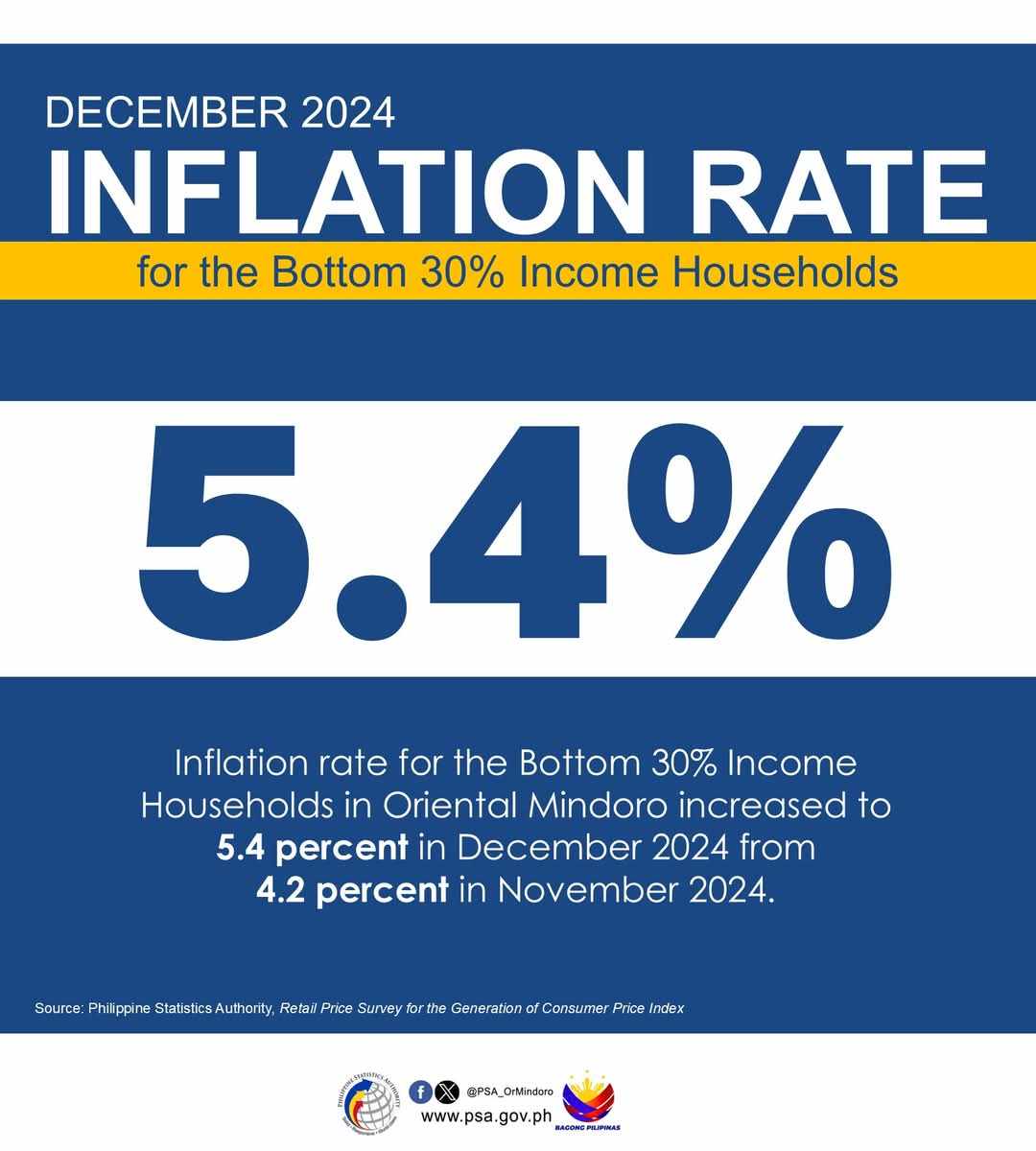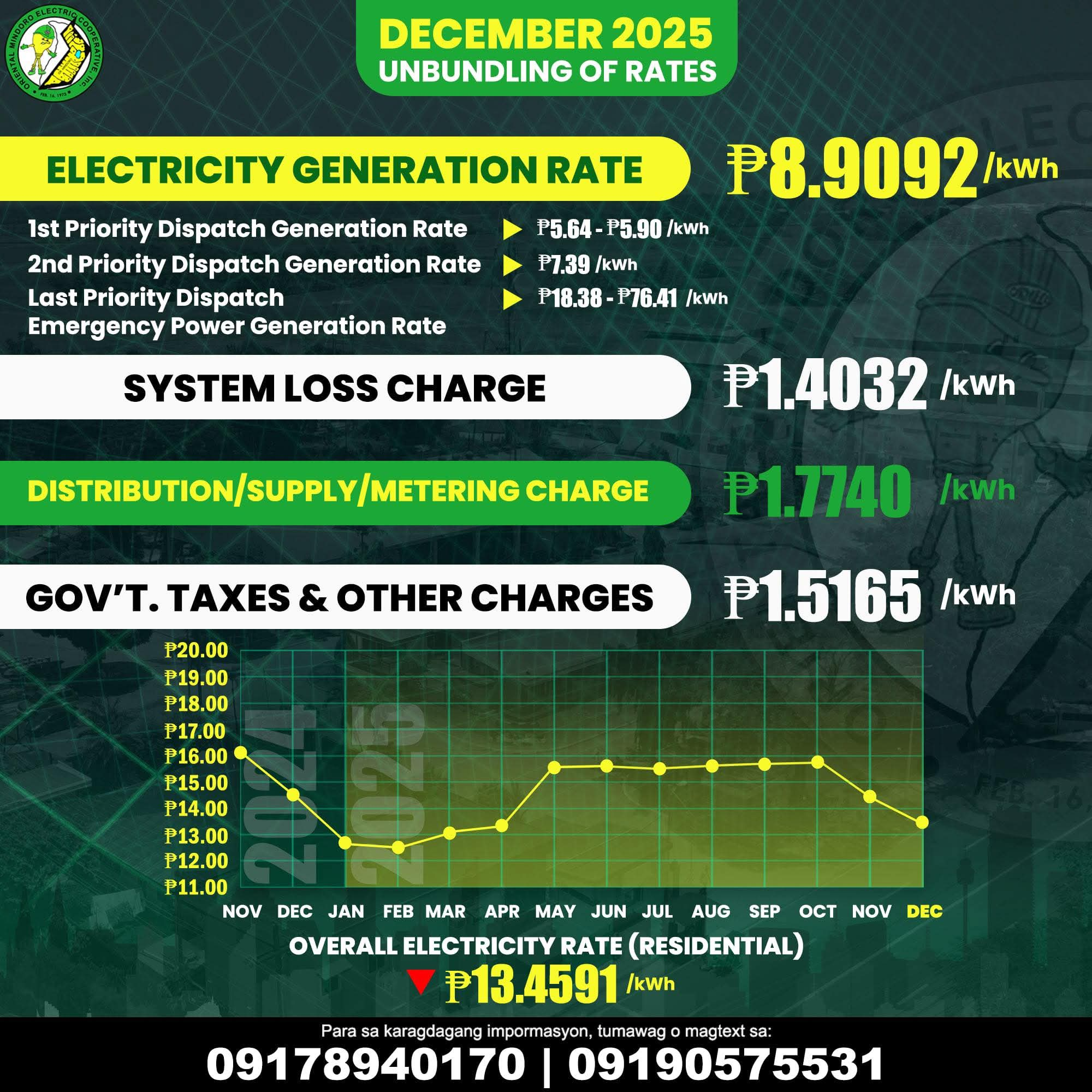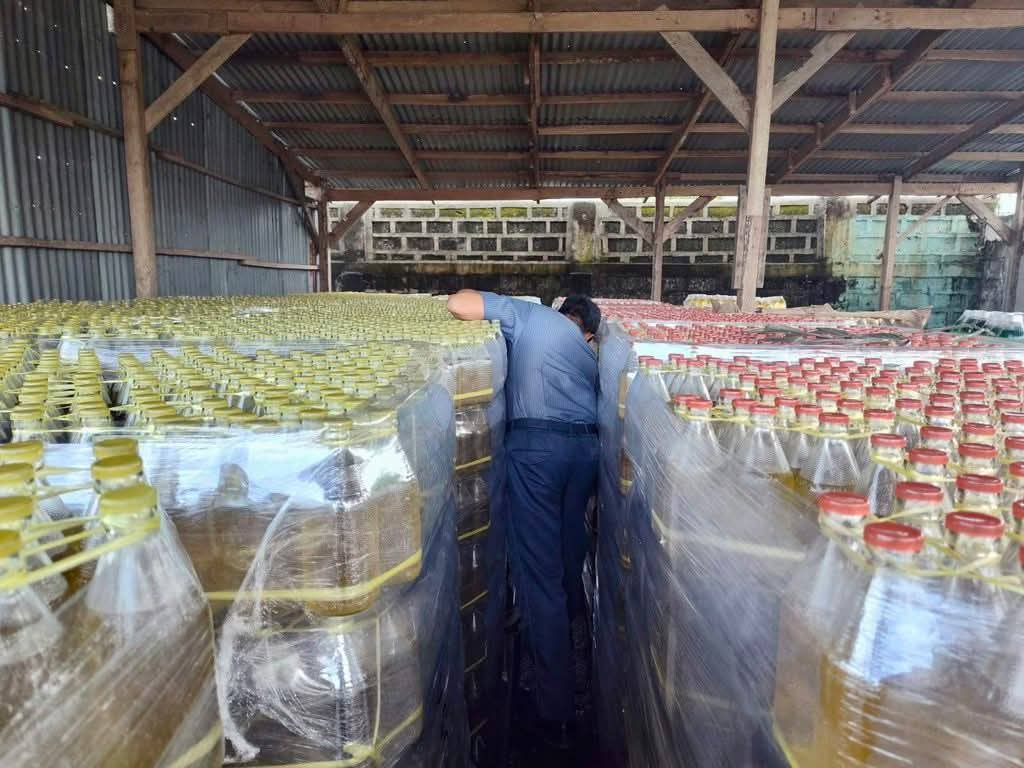Inflation for Oriental Mindoro’s poorest households surged to 5.4 percent in December 2024, driven by skyrocketing meat prices and rising utility costs, unveiling a worrying trend for the province’s most vulnerable residents, the Philippine Statistics Authority (PSA) reported Monday.
The December rate jumped from 4.2 percent in November and exceeded the previous year’s December 2023 rate of 4.9 percent, particularly affecting the province’s bottom 30 percent income households.
The increase comes despite the province achieving a lower annual average inflation of 4.1 percent for 2024 compared to 2023’s 10.0 percent.
The most dramatic price increases hit the meat sector, where inflation catapulted to 33.6 percent in December from 22.9 percent in November, placing severe strain on household food budgets.
Overall food inflation climbed to 5.9 percent from 5.5 percent, marking a substantial rise from December 2023’s 2.8 percent.
“Food and non-alcoholic beverages remained the primary inflation driver, accounting for 63.2 percent of the total impact on low-income households, equivalent to 3.41 percentage points of the headline rate,” according to the PSA report.
Housing and utility costs emerged as the second-largest contributor, with rates accelerating to 7.2 percent from 4.7 percent in November, accounting for 21.1 percent of the overall inflation impact.
Restaurants and accommodation services followed at 6.3 percent.
Other notable price increases included:
- Alcoholic beverages and tobacco more than doubled to 11.1 percent from 5.3 percent
- Oils and fats surged to 10.8 percent from 4.7 percent
- Recreation, sports, and culture rose to 4.2 percent from 3.8 percent
- Transportation costs turned positive at 0.1 percent, reversing November’s -1.7 percent decline
The PSA data revealed some moderating factors amid the general upward trend.
Rice prices provided slight relief, declining 1.9 percent after showing a 3.7 percent increase in November.
Fruits and nuts inflation eased to 8.9 percent from 13.2 percent, while vegetables and tubers moderated to 6.6 percent from 7.5 percent.
Basic household maintenance costs showed minimal increase at 0.5 percent, dropping from November’s 0.8 percent, while personal care services inflation eased to 2.0 percent from 2.4 percent.
The food sector breakdown showed varied impacts across categories:
- Fish and seafood reversed its negative trend, rising to 1.8 percent from -2.2 percent
- Dairy products and eggs increased to 2.3 percent from 1.3 percent
- Ready-made food products rose to 5.2 percent from 4.6 percent
- Sugar and confectionery improved slightly but remained negative at -2.2 percent compared to -4.3 percent
The comprehensive data indicates an uphill economic environment for Oriental Mindoro’s poorest residents, with essential goods and services seeing huge price increases.
While some food categories showed moderation, the overall trend suggests continued pressure on household budgets, particularly in basic necessities like meat and utilities.
Philippine economists note that while the 2024 annual average inflation of 4.1 percent represents an improvement from 2023’s 10.0 percent, the December uptick could signal potential woes for low-income households in the coming months if the trend continues.









Write Your Comment